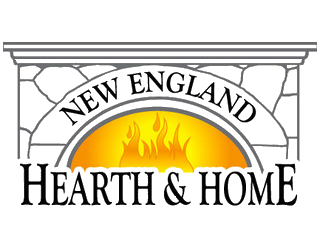Autumn is finally here, and it’s the perfect time to start using your fireplace. But before your first fire, there are certain things you need to do to ensure your fireplace is ready to go and safe to light. Please keep reading for our fall fireplace checklist.
Clean Your Chimney
Clear out your chimney before the first fire of the season! Your local chimney sweep should be able to inspect and clean your chimney for you. The professional can tell if it’s safe to burn fires this fall; they may also apply chemicals to help prevent creosote buildup, keeping your fireplace working smoothly year after year.
Be Aware of Creosote
Creosote is the residue that gathers on the inside walls of chimneys as wood burns; this substance ignites easily and can catch fire resulting in serious damages to the chimney. Your professional chimney sweep should be able to remove any excess creosote with their equipment. If you are unable to have your flue inspected by a pro, check for excess creosote every few fires. Creosote is corrosive and will damage bricks if built up; it can also become explosive (producing flames)! After lighting your first fire of the season, wait until all embers are out before opening your damper completely; this will help prevent fumes from back drafting into the room (poisonous carbon monoxide).
Limit Your Fires
It’s recommended that homeowners light no more than two fires per day (if possible) or one large fire each day; Having too many fires creates too much creosote. To prevent creosote buildup, burn only high-quality seasoned hardwood and keep your fire hot enough to produce a long-lasting bed of coals (the hotter, the better).
Consider a Wood Stove
Fall is also a great time to install a new woodstove! Leave doors open when not in use; this will help prevent creosote buildup.
Keep it Clean
Keep your fireplace clean by removing ashes daily while fires are still burning; use an ash bucket with a handle or metal poker (never plastic) to move embers away from walls if necessary.
Test The Air
Regularly test for carbon monoxide poisoning; symptoms include headaches, dizziness, nausea, mental confusion, muscle weakness, chest pain, and vomiting (if you experience any of these symptoms for no apparent reason, immediately vacate the premises and call the fire department).
Be Careful What You Burn
Never burn cardboard or paper; they produce toxic fumes, including hydrogen cyanide (rarely found in smoke) and carbon monoxide. Don’t burn painted, treated, pressure-treated or chemically-treated wood (including plywood); creosote can be corrosive to chimneys and may also release chemicals into your house’s air supply!
Be Selective with Your Firewood
Store firewood away from home at least 50 feet away on a hard surface such as a driveway or porch to keep rodents out – stack it off the ground if you want it kept dry. A good rule of thumb is one face cord per fireplace per year plus one; if you can’t store it inside, keep it covered at all times. Keep your fireplace damper closed when not in use (if equipped with one). Try to burn seasoned hardwood only (no pressure-treated or painted wood), but if deciding between using green or seasoned- make your choice based on how long the fire will be burning – green is better for short fires, and seasoned is better for long fires.
Follow Safety Precautions
Never leave children unattended around a lit fireplace! Kids should be taught to stay away from the hearth area unless an adult is present; teach them that the space under the fireplace’s opening typically isn’t safe either because hot embers can pop out unexpectedly.
